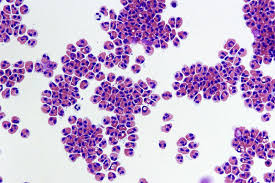The normal range for WBC Blood Test
Let's start with the What is WBC and The normal range for WBC blood test that helps you to know about tests
Types of white blood cells (WBC differential). The main types of white blood cells are neutrophils, lymphocytes, monocytes, eosinophils, and basophils.
mature neutrophils, which are called non-segmented neutrophils, are also included in this test. Each type of cell plays a different role in the protection of the body. The amount of each of these types of white blood cells provides important information about the immune system.
If the normal range for WBC is low amount of different types of white blood cells can help determine if there is an infection, an allergic or toxic reaction to medications or chemicals and many conditions, such as leukemia.
What is WBC
White blood cells, conjointly known as leukocytes, fight infection. They move throughout your body in your blood, searching for invaders. And your body is ceaselessly creating a contemporary provide.
if the WBC disturbed I mean the normal range for WBC is disturbed many diseases can attack you and you are fell in serious disease
Your doctor measures what percentage of those cells you've got by causing a number of your blood to work to try and do an entire blood count, or CBC.
Your white blood corpuscle count is one in every one of the numbers you go back to from this take a look at. it's going to purpose toward or ensure a designation or show whether or not a treatment is functioning or not.
Your white blood corpuscle count is one in every one of the numbers you go back to from this take a look at. it's going to purpose toward or ensure a designation or show whether or not a treatment is functioning or not.
Most often, an occasional white blood corpuscle count is nothing to stress concerning.
Types of WBC
There are 5 major types of blood cells- Basophils
- Eosinophils
- Lymphocytes (T cells, B cells, and Natural Killer cells)
- Monocytes
- Neutrophil
What Is Low:
How many white blood cells (WBCs) somebody has varied, however, the conventional variety is sometimes between 4,000 and 11,000 per microliter of blood.
A biopsy that shows a corpuscle count of but 4,000 per microliter (some labs say but four,500) may mean your body might not be able to fight infection the means it ought to. a coffee range is typically referred to as leucopenia.
What is the Cause:
Your doctor can do a physical examination and contemplate symptoms that you just have alongside your past medical problems to work out what is behind your result.
Bone Marrow Problem:
The spongy center of your bones, that is named the bone marrow, makes blood cells. Low blood cell counts area unit usually joined to bone marrow issues. Being around bound chemicals, like benzene and pesticides, likewise as some kinds of cancer and cancer treatments as well as therapy and radiation, will hurt your bone marrow's ability to create WBCs.
Infection:
Viruses will have an effect on your bone marrow and cause low WBCs for a short time. Severe infections, like blood infections, will result in your body depletion WBCs quicker than it will create them. HIV kills a selected quite white somatic cell.
Follow Up Tests:
If there isn't any clear reason for an occasional white blood corpuscle count, your doctor can in all probability need to try and do the check once more or do a differential or "diff" alongside the complete blood count and doctor check
the normal range for WBC if the value is disturbed doctor can treat you and you are recovering as well as possible
This different check offers loads additional detail. There square measure traditional ranges for every one of the 5 styles of WBCs, and a few issues solely have an effect on one sort.
The results of a diff might facilitate your doctor to slim down what is going on. Many times, a perennial check can show that your blood cell count is traditional.
Low blood counts
Other terms you can hear:- Myelosuppression: decreased production of blood cells, which can cause a decrease in blood count.
- Pancytopenia: decrease in the three types of blood cells: red blood cells (red blood cells), platelets and leukocytes (white blood cells), which can cause decreases in the red blood cell, platelet and/or white blood cell counts.
- Anemia: decrease in the number of red blood cells (RBC), which can cause a decrease in the red blood cell count.
- Thrombocytopenia: decrease in the number of platelets (PLT), which can cause a decrease in blood platelet count.
- Leukopenia: a decrease in the total number of white blood cells (WBC), which can lead to a decrease in white blood cell count.
- Neutropenia: decrease in the number of neutrophils, a type of leukocyte, which can cause a decrease in white blood cell count.
- Granulocytopenia: decrease in the number of granulocytes (the group of leukocytes that includes neutrophils, basophils, and eosinophils), which can cause a decrease in white blood cell count.
WBC normal range:
How many white blood cells (WBCs) somebody has varied, however, the conventional variety is typically between 4,000 and 11,000 per microliter of blood. A biopsy that shows a white blood cell count of but 4,000 per microliter (some labs say but four,500) may mean your body might not be able to fight infection the manner it ought to.
Thanks For Visting

Post a Comment
Post a Comment